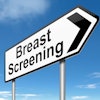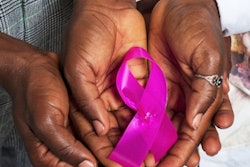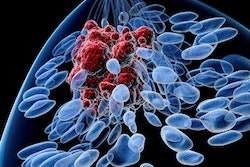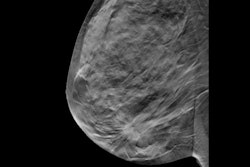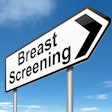Consideration is needed for breast cancer screening in women younger than 40 years, according to research presented at the American Roentgen Ray Society (ARRS) annual meeting.
Manisha Bahl, MD, from Massachusetts General Hospital in Boston presented the findings, which showed that women between the ages of 30 and 39 years have a cancer detection rate of nearly three per 1,000, with about half of screening-detected cancers being invasive.
“Although our study is small, it does shed some insight into the characteristics of asymptomatic breast cancers detected by screening mammography in women younger than 40,” Bahl told AuntMinnie.com.
Women under 40 are typically not recommended for breast cancer screening. Bahl pointed out that there is limited published research regarding this population of women.
She and colleagues sought to determine the rates and characteristics of screening-detected and interval breast cancers in women between the ages of 30 and 39. The retrospective study included data collected between 2007 and 2019 from 4,150 women in this age range who underwent 4,448 screening mammograms. Additionally, all exams performed from 2013 to 2019 included digital breast tomosynthesis (DBT).
 Images of a 39-year-old woman shows a grade 2 invasive ductal carcinoma on mammography, confirmed by supplementary ultrasound. Mammography detected an asymmetry with calcifications while ultrasound examination revealed a hyperechoic mass. The resulting sentinel lymph node biopsy was negative.ARRS
Images of a 39-year-old woman shows a grade 2 invasive ductal carcinoma on mammography, confirmed by supplementary ultrasound. Mammography detected an asymmetry with calcifications while ultrasound examination revealed a hyperechoic mass. The resulting sentinel lymph node biopsy was negative.ARRS
The team found that the overall cancer detection rate was 2.9 per 1,000 exams (13/1,448). The abnormal interpretation rate meanwhile was 9.3%, positive predictive value was 3.1%, sensitivity was 81.3%, specificity was 91%, and the false-negative rate was 0.7 per 1,000 exams (3/4,448).
Of the 13 screen-detected breast cancers, six were invasive ductal carcinoma and seven were ductal carcinoma in situ. These were detected in women 35 to 39 years old, the researchers noted. Bahl said 10 of the women had documented risk factors.
Of the false-negative cases, two were detected based on symptoms, while the other was by high-risk screening MRI in women between the ages of 36 and 38. The team reported that the two interval cancers detected based on symptoms were both invasive ductal carcinomas with metastases to the ipsilateral axillary lymph nodes. The one case detected on high-risk screening MRI was grade 2 ductal carcinoma in situ.
Bahl said these results could inform future guidelines about the appropriateness and frequency of screening in these women. However, future studies should include pooled data from multiple institutions to better understand the tumor biology characteristics of breast cancers in younger women. She also told AuntMinnie.com that the results support the importance of breast cancer assessment at an early age to guide personalized screening strategies.
Bahl added that her team aims to address research gaps in breast cancer identified by the U.S. Preventive Services Task Force (USPSTF). These include research to better understand screening strategies for women who have dense breast tissue and studying higher breast cancer mortality rates among African American women.


